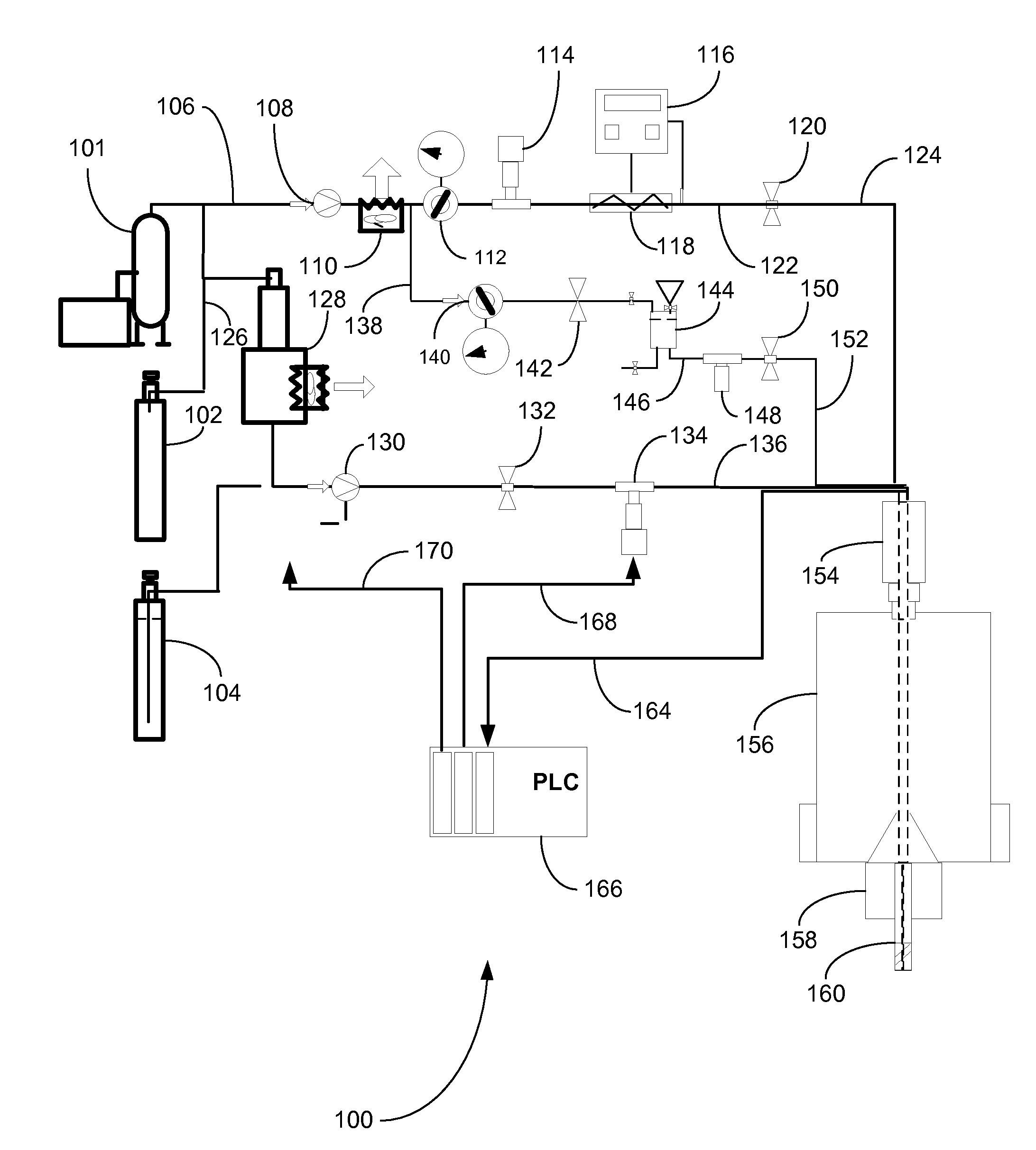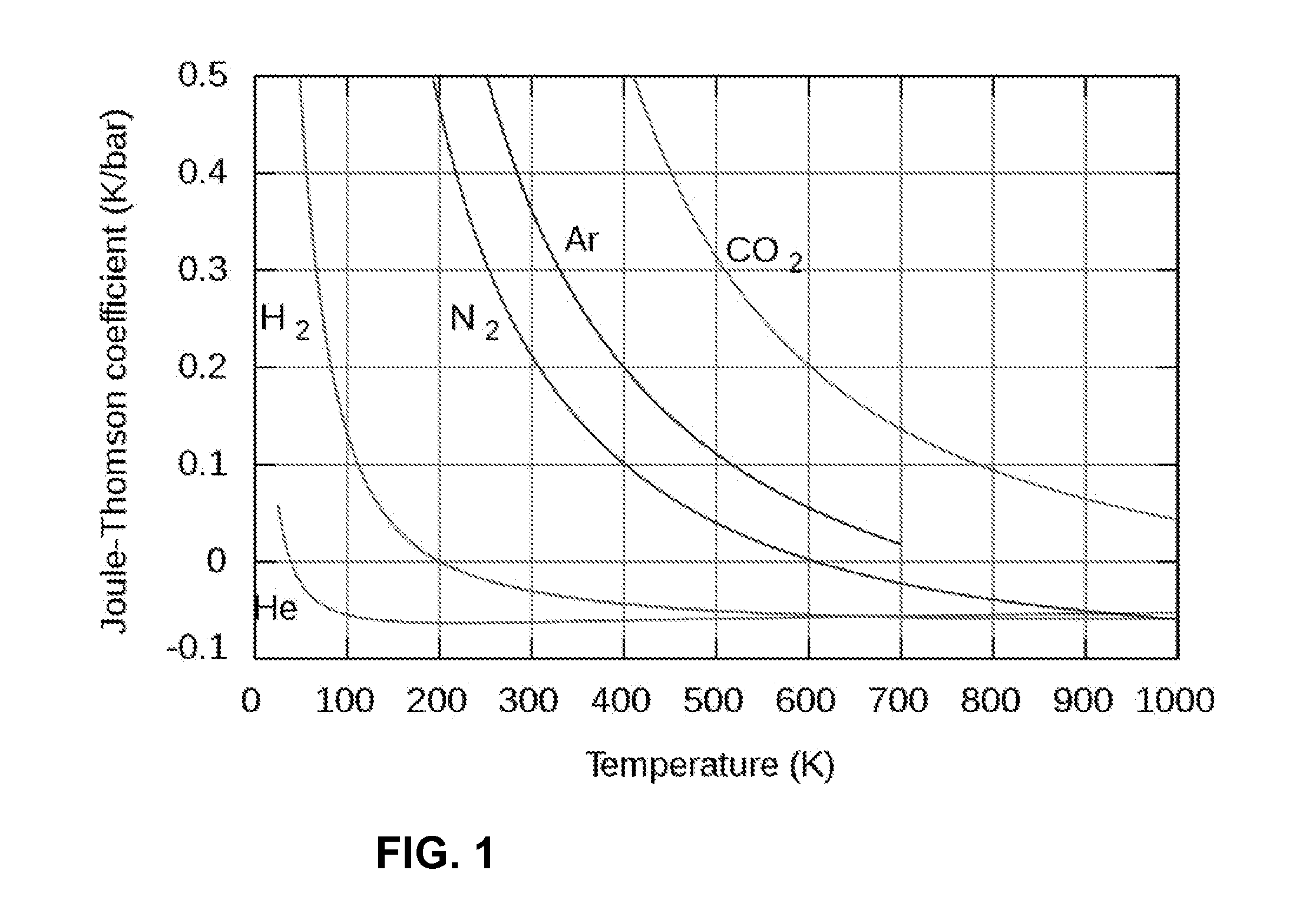Method and apparatus for thermal control within a machining process
a technology of thermal control and machining process, which is applied in the direction of metal-working machine components, maintenance and safety accessories, metal-working apparatus, etc., can solve the problems of flooded applications, damage which requires repair, realignment and downtime, and is quite difficult to control during micro-machining or high-precision applications
- Summary
- Abstract
- Description
- Claims
- Application Information
AI Technical Summary
Benefits of technology
Problems solved by technology
Method used
Image
Examples
example 1
[0027]Several tests were performed to determine the efficiency of the present invention. The tests were performed on a CNC milling machine. Test cuts were made with tool steel. Test cuts were performed to verify the CNC machine program was configured properly. Once the programming was verified, Control Runs were performed with 6AL4V Titanium. For this phase of testing, ten block of 6AL4V Titanium were available and were all used during the different test cuts.
Control Run
[0028]A first control run was done using flood techniques of the prior art. The below machining specifications for each cut have been optimized to provide a balance of productivity and tool life for this material and coolant / lubrication system. Five control test pieces were machined to verify repeatability.[0029]Tooling: Face mill; 2″ diameter; 4 inserts; approximately 0.118″ diameter coolant port for each insert.[0030]Insert: Ultra Tool 61012TA round insert for Ti[0031]Spindle Speed: 600 rpm[0032]Feed rate: 0.010″ / i...
example 2
[0037]A CNC coolant network in accordance with the present invention was used to test drilling of stacked titanium and carbon fiber reinforced plastic (CFRP) stack-ups. A 0.50 inch titanium plate having a thermocouple affixed thereto was drilled with a ported 0.25 inch diameter, uncoated carbide drill bit. The bit was run by a Cooper air-driven spindle and motor. The air-driven drilling system was adjusted to run at a drilling speed of approximately 600 rpm and at a drilling feed rate of approximately 1 inch per minute with no pecking
[0038]A machining coolant network of the present invention employing 100% carbon dioxide with a carbonated MQL lubricant additive of BOELUBE® was used as follows:[0039]Carbon dioxide over-pressure: 300 psi[0040]Liquid carbon dioxide injection feed: 3 pounds / hour[0041]Lubricant injection rate: 25 mls / hour
[0042]After a series of drilling tests to optimize the set-up, an actual drilling test series comprising 3 holes each was performed comparing the presen...
PUM
| Property | Measurement | Unit |
|---|---|---|
| temperature | aaaaa | aaaaa |
| temperature | aaaaa | aaaaa |
| temperature | aaaaa | aaaaa |
Abstract
Description
Claims
Application Information
 Login to View More
Login to View More - R&D
- Intellectual Property
- Life Sciences
- Materials
- Tech Scout
- Unparalleled Data Quality
- Higher Quality Content
- 60% Fewer Hallucinations
Browse by: Latest US Patents, China's latest patents, Technical Efficacy Thesaurus, Application Domain, Technology Topic, Popular Technical Reports.
© 2025 PatSnap. All rights reserved.Legal|Privacy policy|Modern Slavery Act Transparency Statement|Sitemap|About US| Contact US: help@patsnap.com



